2012 Eco-Logical Grant Program Annual Report
March 1, 2013
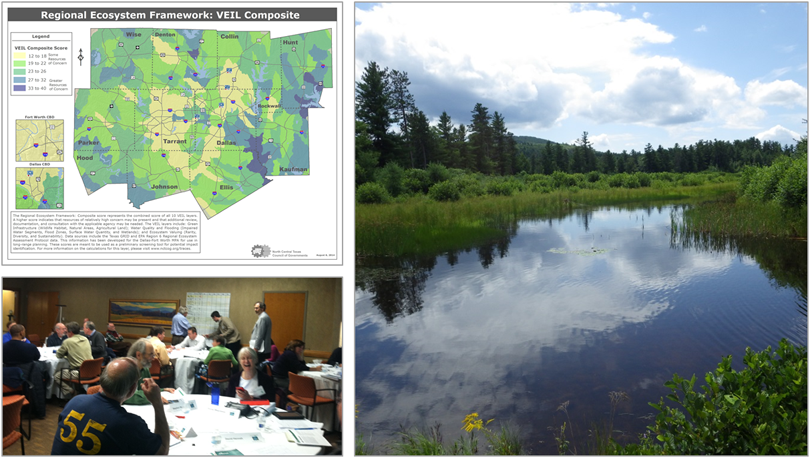
Photo: City of Chicago
Publication No. FHWA-HEP-13-021

Prepared for:
Office of Project Development and Environmental Review
Federal Highway Administration
U.S. Department of Transportation

Prepared by:
Center for Transportation Policy and Planning
John A. Volpe National Transportation Systems Center
Research and Innovative Technology Administration
U.S. Department of Transportation
Acknowledgments
The U.S. Department of Transportation (U.S. DOT) Volpe National Transportation Systems Center (Volpe Center), in coordination with the Federal Highway Administration (FHWA), prepared this report, which was funded by the FHWA Office of Planning, Environment, and Realty's Surface Transportation Environment and Planning Cooperative Research Program (STEP). The project team included Haley Peckett of the Volpe Center's Transportation Planning Division and Andrew Breck, Emily Futcher, Julianne Schwarzer, and Rachel Strauss of the Volpe Center's Organizational Performance Division.
Back to top
Contents
Back to top
Executive Summary
Testing and Refining an Ecosystem Approach to Infrastructure Planning
As America's transportation network continues to expand, the development of infrastructure threatens to seriously disrupt wildlife connectivity, degrade plant and animal habitats, and damage watersheds. In 2006, the Federal Highway Administration (FHWA) and its partners responded to these challenges by publishing Eco-Logical: An Ecosystem Approach to Developing Infrastructure Projects (Eco-Logical). The publication sets forth an approach to, and tools for, building infrastructure that is more sensitive to sustaining natural resources. The vision is to avoid, minimize, and mitigate adverse impacts of this development through integrated, ecosystem-scale planning.
FHWA'S Eco-Logical grant program, started in 2007, provides the financial and technical support agencies need to apply the ecosystem-scale planning principles outlined in the 2006 publication. Grant recipients are encouraged to develop novel approaches to integrate planning across agency boundaries and to work with partners to mitigate the ecological effects of infrastructure development. The program helps FHWA and its partners test the principles and tools set forth in the 2006 publication and refine the approach as needed.
Grant Program Overview
Since 2007 the Eco-Logical grant program has funded 15 projects nationwide; twelve grant recipients completed their projects prior to 2012, two grant recipients completed their projects in the 2012 calendar year, and one anticipates finishing its project in 2013.
This annual report summarizes the progress and lessons learned from all 15 grant recipients from January through December 2012, the fifth year of the Eco-Logical grant program. The report:
- Evaluates the effects of the Eco-Logical grant program on grant recipient organizations and on partner agencies, including how the grant projects have affected the recipient organizations' practices for prioritizing projects and establishing programs and policies;
- Documents the benefits and risks that grant recipients experienced through their involvement in the grant program; and
- Identifies future actions to advance or duplicate successful elements of the grant projects, or to implement the Eco-Logical approach on a larger geographic scale.
This report is divided into four sections:
- Program Summary
- Methodology and Summary of Grant Program Measures
- Findings
- Conclusions
The appendices present detailed project descriptions, a table of measures to track the impact of Eco-Logical projects on grant recipient organizations, and a compendium of recommendations. The compendium synthesizes recommendations from each of the previous four Eco-Logical grant program annual reports and adds recommendations based on this year's findings.
Findings and Keys to Success
Through discussions with grant recipients and review of their reports and tools, the following characteristics were identified as instrumental to project success:
- Access to Tools to Advance Eco-Logical: Regional Ecosystem Frameworks (REFs) and other spatial analysis tools developed through Eco-Logical grant projects are most effective when:
- Grant recipients designated funding or staff capacity to frequently update the data within the tools;
- The tools are easily accessible and used by a range of stakeholders, including those with a limited understanding of technical data; and
- The tools can be easily expanded to encompass larger geographic areas.
- Adaptable Organizational Structure and Flexible Staff Capacity: Organizational structures and staff flexibility are strong determinants of agencies' implementation of the Eco-Logical approach. Responsibilities related to Eco-Logical implementation may not always fit into staff members' regular work duties. Organizations with more successful grant efforts have collaboration across departments, awareness of the Eco-Logical project among multiple staff disciplines, and staff that are allowed to engage earlier in the transportation planning process.
- Strong Interagency Partnerships: All grant recipients cited interagency partnerships as a valuable outcome of their Eco-Logical project. Partners help implement the grant projects and promote the Eco-Logical approach throughout the State or region. Ways to improve partnerships include enlisting support early in the planning process, offering targeted training for transportation staff, and coordinating with partners on technical components of Eco-Logical tools or programs.
- Technical and Financial Support for Eco-Logical Projects: FHWA can support the Eco-Logical approach by providing incentives for its use and by offering access to subject-matter experts and technical assistance. Peer exchanges for grant recipients and the Eco-Logical webinar series allow practitioners and other organizations to learn best practices from each other.
FHWA Eco-Logical Program
FHWA's Eco-Logical program provides several mechanisms for sharing the grant recipients' successes. This includes webinars, research, trainings, past annual reports, and guidance materials. Most of these resources are found on the FHWA Eco-Logical website, which also provides the latest news about the program. Through these venues, FHWA can share this annual report's findings and encourage greater adoption of grant project components. Furthermore, FHWA encourages Federal resource and regulatory agencies to promote a better understanding of the Eco-Logical approach among their Headquarters and field office staffs to broaden and enrich the applications of the approach throughout the country.
Back to top
Program Summary
Background of the FHWA Eco-Logical Grant Program
The FHWA Office of Planning, Environment, and Realty established the Eco-Logical grant program in 2007, providing a total of approximately $1.4 million to 15 projects selected to test an ecosystem-scale approach to infrastructure development. The grant program focused on applying the goals and principles of the 2006 multi-agency publication, Eco- Logical: An Ecosystem Approach to Developing Infrastructure Projects.
Project activities included transportation and environmental planning, data collection and analysis, environmental mitigation, public education, and prioritization of natural and cultural resources. FHWA required grant recipients to provide matching funds greater than or equal to 50 percent of project costs. The grant performance periods ranged from 12 to 60 months. Several grant recipients extended their performance periods to accommodate unforeseen challenges or changes in project scope.
NOTE: For specific information on the Eco-Logical grant projects, including project title, see Appendix C. Eco-Logical Grant Project Summaries.
FHWA Eco-Logical Program History
The development of infrastructure facilities has adversely impacted ecosystems by disrupting wildlife movement, introducing pollution and invasive species into healthy watersheds, and changing species makeup of both plants and animals in the nearby habitats. Past approaches to avoid, minimize, and mitigate adverse impacts on natural resources may not have always provided sustainable environmental outcomes.
An interagency steering team developed a process that is both sensitive to wildlife habitat and enhances ecosystem sustainability, which was documented in the 2006 publication. Eight Federal agencies, referred to here as Signatory Agencies (see sidebar), signed the document and are important partners in the overall Eco-Logical program. Eco-Logical encourages flexibility in regulatory processes under existing authorities. Specifically, it sets forth a conceptual framework for integrating plans and data across agency and disciplinary boundaries and endorses ecosystem-based mitigation.
Current Eco-Logical Program Activities
The findings from the Eco-Logical grant recipients can help FHWA build upon its efforts to bring the Eco-Logical approach to the mainstream of transportation project and mitigation development. The grant program has proven to be an invaluable testing ground for the Eco-Logical approach. Much of the current FHWA Eco-Logical program has been influenced either directly or indirectly by the grant program. Some of these activities are highlighted below.
Plan for Implementing Eco-Logical
Since 2011, FHWA's Eco-Logical program has worked with the Transportation Research Board (TRB) to develop implementation strategies for the capacity components of the Second Strategic Highway Research Program (SHRP2). In 2012, FHWA, TRB, and the American Association of State Highway and Transportation Officials (AASHTO) developed the “Implementing Eco-Logical” plan to achieve widespread use of integrated highway and conservation planning and development strategies within 10 years, as part of FHWA's Eco-Logical program. Implementing Eco-Logical includes specific strategies and tools that will result in streamlined permitting processes while also achieving environmental goals and greater predictability.
The plan recommends six strategies to promote the adoption of “Implementing Eco-Logical.” These are: education of agency leadership, incentives, technical assistance, development of a business case, tools and technology, and communication materials, which will be overseen and managed primarily by FHWA, with support from AASHTO and other partners. The findings from this annual report support the strategies in the implementation plan, and FHWA will integrate its implementation efforts with the current activities of the Eco-Logical program.
Eco-Logical Webinar Series
In 2012, FHWA, in coordination with the Volpe Center, presented seven webinars to a national audience of environmental and transportation practitioners, featuring innovative research, applications, and resources related to the Eco-Logical program. Many grant recipients, their partners, and Signatory Agencies presented their findings. Two of the 2012 webinars covered the first two steps of the Eco-Logical approach and the Integrated Ecological Framework (IEF).1 FHWA will continue to feature the remaining seven steps of the IEF in 2013, focusing on practical guidance and real-world examples for implementing each step.
Grant recipients noted the following additional considerations for the future to connect the Eco-Logical grant program to the webinar series:
- Continue opportunities for information-sharing. Grant recipients asked for additional opportunities to learn best practices from their peers. Webinars and peer exchanges offer opportunities for grant recipients and for practitioners new to Eco-Logical to learn from other participants that have already implemented the approach.
- Highlight interagency partnerships. Two grant recipients signed multi-agency agreements to implement their Eco-Logical projects. This is an example of one of the most advanced steps of the Eco-Logical approach. These grant recipients could be featured in webinars covering steps 6 through 9 of the IEF.
Eco-Logical Signatory Agency Activities
FHWA supports ongoing meetings and collaboration among the Signatory Agencies to identify opportunities where the agencies can provide guidance and support to organizations implementing the Eco-Logical approach. The Signatory Agencies attended biannual meetings in January and July 2012 to discuss multi-agency outreach for Eco-Logical and participated in other activities to support Eco-Logical and related SHRP2 research. In coordination with the Signatory Agencies, FHWA developed Eco-Logical Successes (January 2011) with brief summaries of Signatory Agency programs that implement or include Eco-Logical principles.2
The Signatory Agencies can also support widespread adoption of the Eco-Logical approach, as the grant project findings demonstrate:
- Encourage access to technical expertise. Grant recipients requested improved access to technical expertise. Signatory Agencies can help connect practitioners with resources or direct technical assistance in areas such as environmental science, environmental review and permitting, species and habitat, and other related areas of expertise.
- Present targeted messages about Eco-Logical's benefits. Grant recipients observed that the benefits of the Eco-Logical approach may be more immediately apparent to natural resource organizations. Natural resource Signatory Agencies can help communicate the benefits of Eco-Logical to their field office staff, who can support transportation and land-use agencies in their States and regions.
Outcomes of the 2011 Grant Program Annual Report
As a result of the recommendations and findings of the 2011 Eco-Logical Grant Program Annual Report, FHWA has pursued several new initiatives to encourage more widespread adoption of the Eco-Logical approach. The initiatives emerging from previous annual reports include:
- Eco-Logical Peer Exchange: FHWA invited five grant recipients, whose projects were in advanced stages of implementation or showed strong potential for replication, to participate in a peer exchange in Washington, D.C., in March 2012. Participants exchanged information about implementation opportunities and barriers and made connections with subject matter experts. Participants also discussed implementation activities with the greatest potential to expand the reach of the Eco-Logical approach.
- Eco-Logical Training Strategy: FHWA, in cooperation with the Signatory Agencies, developed a training strategy for the Eco-Logical approach. The strategy consists of a needs assessment, based on interviews with key stakeholders. The strategy recommended web-based outreach and interagency workshops as the primary training delivery methods. The training strategy was drafted in late 2012 and will be integrated with SHRP2 implementation activities.
- Eco-Logical Benefits Framework: The Volpe Center, in coordination with FHWA, is developing a series of process models to begin to demonstrate the economic benefits associated with applying the Eco-Logical approach. The process models and an associated report will differentiate between the inputs and outputs of the standard transportation delivery process and those of the Eco-Logical approach.
Back to top
Methodology and Summary of Grant Program Measures
Methodology
Between October and December 2012, the Volpe Center project team collected data for this report primarily through 30 to 60 minute telephone discussions with all 15 Eco-Logical grant recipients. In addition, the team gathered information from grant recipients' quarterly progress reports, final grant project reports, project websites and tools, and draft and completed deliverables. Finally, the team compiled, analyzed, and synthesized the data into the project summaries and findings presented in this report.
Program Measures and Themes
The project team asked grant recipients to consider how their participation in the Eco-Logical grant program influenced their agencies' priorities, activities, and future goals. The measures looked both at results among individual grant recipients and overall trends in the reach of the Eco-Logical approach.
Measuring Grant Program Effectiveness
As a result of the data gathering and analysis, the project team identified several broad measures that provide a framework for evaluating how the grant projects influenced the recipient organizations and their respective regions. Appendix A contains a table of detailed information applying these measures to each of the 15 grant recipients; the results are also summarized below.
How did the grant program influence the adoption of regional priorities?
Identifying shared priorities is at the center of the Eco-Logical approach, but this becomes meaningful only if the priorities are then applied to transportation and environmental mitigation projects. Through their grant projects, all grant recipients set regional priorities for natural resources, and most adopted and applied these priorities to their respective agencies' programs and projects. In many cases, State DOTs, metropolitan planning organizations (MPOs), and/or other partners also used these priorities to guide their planning and delivery of transportation projects. Good examples that show how regional priorities have been identified include REFs, vision documents with regional goals, and maps that overlay multiple data types to identify areas with high resource value.
How did the grant program influence the dissemination of Eco-Logical principles within and across organizations?
All grant recipients reported that staff directly involved in the Eco-Logical grant projects had increased knowledge about integrated planning and partnerships, and most of these staff applied Eco-Logical principles to their work outside of the grant projects. Some grant recipients also reported adoption of the Eco-Logical approach throughout their organizations and/or by partners. The most successful grant recipients made components of the Eco-Logical approach required for their organizations and/or their partners.
Were grant recipients able to apply Eco-Logical principles to their other work?
Grant recipients with formalized strategies to apply their Eco-Logical plans and tools were more likely to be implementing their projects with effects more widely observed through their organizations and regions. Most grant recipients devoted staff time to continue the implementation of their Eco-Logical projects, although many reported that staff time is limited due to lack of funding. Some received additional grants that support the goals and priorities of the Eco-Logical project. Implementation efforts range from informal outreach to comprehensive data updates and multi-agency implementation committees.
Common Themes in Implementing the Eco-Logical Approach
The following themes show the broader impacts of the Eco-Logical approach across all grant recipients. These indicate trends in the influence of Eco-Logical principles upon participating organizations, rather than measuring individual effects at the project level.
What were the greatest challenges to implementing the Eco-Logical approach?
Grant recipients reported that maintaining staff dedicated to an Eco-Logical project is the greatest challenge to adopting the Eco-Logical approach. Many organizations lack the funding to dedicate staff throughout the Eco-Logical process even though grant recipients recognize the importance of continuity of project knowledge. Other common challenges include communicating the benefits of Eco-Logical, working across scales and jurisdictions, and accessing data and best practice examples from other projects. Figure 2 shows the greatest perceived challenges and risks of undertaking the Eco-Logical approach.
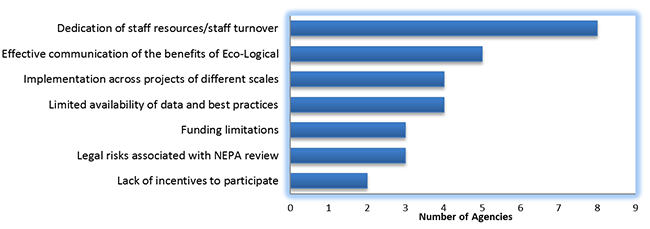
Figure 2: Challenges and Risks of the Eco-Logical Approach
Twelve of the 15 grant recipients provided responses regarding the challenges and risks they faced in implementing the Eco-Logical approach. Several agencies identified multiple challenges and risks; therefore, the total number of responses catalogued is greater than 12.
Who benefits from the Eco-Logical approach?
Figure 3 shows that grant recipients were divided almost evenly when asked who was most likely to benefit most from using the Eco-Logical approach. Several grant recipients noted that all stakeholders benefit equally from the streamlining, cost savings, and consensus-based outcomes associated with Eco-Logical.
Figure 3: Stakeholders Benefitting from the Eco-Logical Approach
Figure 3 includes data from 14 of the 15 grant recipients. Several grant recipients identified multiple stakeholders that benefit the most from the Eco-Logical approach. The category “All Stakeholders” includes grant recipients that stated that all parties benefit equally from Eco-Logical, including local/State governments; the public; and transportation, environmental, and other agencies. The figure shows the percentages of responses for each category out of the total number of responses.
What were the greatest impacts of the Eco-Logical projects?
Eco-Logical grant recipients reported that forming and growing partnerships was seen as the greatest benefit of Eco-Logical grant projects. Figure 4 reflects the high value that grant recipients assigned to these relationships throughout the history of the grant program. Grant recipients also mentioned that the Eco-Logical approach improved planning across disciplines, both within the grant recipient organizations and with other organizations in the State or region. Some agencies identified Eco-Logical as a helpful planning tool for developing methodologies used in future projects and as a means to receive grants for new proposals.
Figure 4: Greatest Impact of Eco-Logical Projects
Figure 4 represents data from 14 of the 15 grant recipients. Several agencies identified multiple impacts of the Eco-Logical approach, all of which are represented in the figure.
Back to top
Findings
The project team evaluated the interviews, grant products and other data from grant recipients to determine the overall benefits and risks of implementing the Eco-Logical approach and recommended actions for future grant recipients or organizations implementing Eco-Logical. The findings fall into four categories:
- Access to Tools to Advance Eco-Logical
- Adaptable Organizational Structure and Flexible Staff Capacity
- Strong Interagency Partnerships
- Technical and Financial Support for Eco-Logical Grant Projects
Access to Tools to Advance Eco-Logical
Ten Eco-Logical grant recipients developed REFs3 and other spatial analysis tools that help identify shared regional priorities. These tools can provide agencies with a common understanding of the locations and impacts of proposed infrastructure. Grant recipients identified several lessons learned that may help other practitioners.
- Resource analysis tools should be easy to use. Many Eco-Logical tools developed by the grant recipients combine data sets across disciplines. Grant recipients found that users can be easily overwhelmed by unfamiliar information and platforms. Tools that are designed to be user friendly and accessible on a web-based platform can help to spread awareness and encourage understanding of the Eco-Logical approach.
- Sample Project: H-GAC's Eco-Logical tool is a user-friendly, online, interactive map that is intuitive to users without transportation or environmental expertise.
- The design should allow for future expansion. An REF can expand its applications if it can be easily adapted for use in other States or regions. The creation of adaptable REFs can also help avoid the challenges of reconciling different methodologies and priorities associated with other existing tools.
- Sample Project: EPA Region 6 integrated its Regional Ecological Assessment Protocol (REAP) tool into NEPAssist, a web-based interactive forum where environmental practitioners and other stakeholders can ask questions and share information about environmental topics. This integration makes it easier for users without Geographic Information Systems (GIS) expertise to use the REAP data.
- The data within REFs must be updated regularly. REFs that include land-use data can quickly become outdated, especially in regions experiencing new development. Most organizations do not have the staff or funding resources to update data frequently. Grant recipients have tried different ways to overcome this challenge. In the list below, the most effective strategies are listed first, along with the grant recipients that have used each strategy:4
- Apply for grants to fund new data collection and updates (LOSRC, OSU, TCPRC);
- Obtain data from another internal project that is collecting or updating similar kinds of data (e.g., the creation of a mitigation bank program) (NCTCOG);
- Work closely with partners to add their data updates to the tool (NCDENR, NHA, TCSWCD);
- Update data as part of the long-range transportation plan (LRTP) every 4-5 years (CAPCOG, LOSRC, MARC, NCTCOG, TCRPC, TJPDC); and
- Use maps/tools only to identify natural and cultural resources (which change less frequently) and provide a disclaimer that land use may not be accurate (H-GAC, TJPDC).
Adaptable Organizational Structure and Flexible Staff Capacity
Organizational factors can have a crucial effect on the success of an Eco-Logical project. These factors can include organizational size, structures, and practices as well as staff capacity and resources.
Grant recipients recognize these factors and identify several trends among the grant recipients in terms of the diversity of their organizational structure and staff capacity.
- Organizational structure can influence successful implementation of Eco-Logical projects. Organizations that emphasize division of expertise and that prescribe responsibilities only within a staff member's department may have challenges in working on Eco-Logical projects. Staff in these organizations often do not have the flexibility to work outside of their own disciplines on integrated approaches, such as Eco-Logical. For agencies to integrate Eco-Logical into their regular business practices, managers should encourage greater collaboration across disciplines and allow staff the flexibility to participate in early coordination efforts.
- Sample Project: TCRPC noted that their Eco-Logical project helped them realize the benefits of working across transportation, environment, and land-use “silos.”
- Staff capacity and resources for supporting the Eco-Logical approach often require flexible funding sources. Organizations that are able to acquire flexible funding, such as State funds for natural resource management or Sustainable Communities grants from the U.S. Department of Housing and Urban Development (HUD), often had greater success in implementing Eco-Logical projects. Organizations then used this funding to help hire staff to integrate land-use and transportation efforts and/or bring environmental data into the early stages of the transportation planning process.
- Sample Project: The North Carolina Natural Heritage Trust Fund supports a NCDENR staff member to update project data and perform outreach activities.
- Staff awareness of the Eco-Logical project is key to ongoing integration of the Eco-Logical approach and is influenced by organizational practices and structures. Grant recipients reported that if the staff is aware of the Eco-Logical project, then the organization is more likely to integrate the Eco-Logical approach into future projects, plans, and programs. Staff awareness is greater where the project involved developing data or tools that are used widely throughout the organization. Staff awareness is also higher where multiple organizations were involved in Eco-Logical project development and implementation, and where the organization adopted Eco-Logical principles as part of its business practices. In organizations with less staff awareness, Eco-Logical tools, data, and general knowledge are less likely to be shared widely across disciplines. Grant recipients observed lower levels of awareness about Eco-Logical in organizations that are larger and/or have departments with less flexibility to work between disciplines. Staff awareness is also diminished in organizations in which the staff members that originally worked on the Eco-Logical project left their positions or have constrained workloads.
Strong Interagency Partnerships
All grant recipients succeeded in developing and strengthening partnerships over the course of their Eco-Logical project, with many citing these relationships as the most valuable project outcome. Even grant recipients contending with challenges in implementing their Eco-Logical projects reported improved partnerships. Grant recipients made several suggestions for how to maximize the value of partnerships from project inception through implementation.
- The Eco-Logical approach is most effective when all the participating organizations integrate the approach into their daily business practices. Grant recipients observed that Eco-Logical is less effective in a vacuum; to optimize Eco-Logical, all transportation, environmental, and local government stakeholders in the region must support its principles.
- Sample Project: LOSRC reported that its Eco-Logical project must be integrated into local land-use planning, which involves multiple agencies, to be effective in transportation planning; support from NCDENR and other State agencies is helping LOSRC to implement its project.
- Grant recipients should enlist participation and commitments from implementing agencies at the outset of projects. Local governments and transportation agencies have jurisdiction over land use and/or funding for transportation projects, often putting them in the best position to implement products resulting from Eco-Logical projects.
- Sample Project: CAPCOG noted that the implementation of its Greenprint faltered in part because it was not able to secure commitments from local governments early in the project or maintain support during implementation.
- Targeted outreach can help transportation staff better participate in Eco-Logical projects. Transportation agencies reported that engineers and other transportation technical staff may not be familiar or comfortable with the level or collaborative nature of communications that accompany the Eco-Logical approach. Some grant recipients observed that environmental practitioners find it easier to accept the approach because of the central role of natural resource data in the Eco-Logical projects.
- Sample Project: Colorado DOT successfully organized a multi-agency stakeholder group, which built trust and personal relationships among local environmental, land-use, and transportation practitioners. Relationships such as these can help transportation staff feel more comfortable in bringing environmental data and expertise into their projects.
- Project implementation should be coordinated across multiple scales. State DOTs, MPOs, and other stakeholders may be reluctant to integrate their separate processes for transportation-related data analysis and mitigation. By working together, organizations can better share data and avoid duplicating work.
- Sample Project: These separate processes have been a challenge for TJPDC, whose Eco-Logical project establishes a methodology for prioritizing mitigation sites within the watershed. Virginia has a separate list of priority sites that are not necessarily watershed-specific. Coordination between the State and TJPDC would help enhance the mitigation outcomes in TJPDC's planning region.
Technical and Financial Support of Eco-Logical Projects
Grant recipients suggested several ways for FHWA to maximize its future investment in Eco-Logical projects and expand the use of the approach throughout the country. These findings are closely related to recommendations from past Eco-Logical annual reports (see Appendix B).
- Grant recipients may lack the resources to obtain the specialized expertise or technical assistance needed to complete their Eco-Logical projects. Environmental science expertise is critical to many grant recipients in developing and implementing their Eco-Logical grant projects. For example, OSU hired staff botanists and species experts, whom OSU staff credits with improving project outcomes. In cases where this expertise is not available in-house, FHWA could provide expertise through its Division Offices and Resource Center or establish technical services contracts with environmental consultants to support small MPOs, DOTs, and other agencies looking to adopt the Eco-Logical approach.
- Webinars and peer exchanges help grant recipients learn from peers that are also using the Eco-Logical approach. As grant recipients piloted the Eco-Logical approach, they turned to their fellow grant recipients and other early adopters with questions and ideas. Several noted the value of having partners within their regions working on Eco-Logical to trade lessons and best practices. FHWA's Eco-Logical webinars showcase concrete examples of Eco-Logical opportunities and challenges.
- FHWA can provide incentives, guidance, and improved communications to encourage greater organizational adoption of the Eco-Logical approach. Many grant recipients emphasized that increased FHWA encouragement for the Eco-Logical approach would be necessary for widespread implementation. Suggestions included:
- Creating incentives, such as greater credit to grant applications, that incorporate Eco-Logical into projects or funding sources reserved for Eco-Logical practitioners. One grant recipient suggested that FHWA document common constraints in the Eco-Logical approach and create incentives for organizations to overcome these barriers.
- Establishing Federal requirements and guidance to institutionalize Eco-Logical into agencies' practices. FHWA, Signatory Agencies, and State DOTs could bring elements of Eco-Logical into formal agency guidelines or funding approval processes.
- Increasing communication from FHWA to State DOTs and MPOs encouraging the use of the Eco-Logical approach to further organizational adoption.
Compendium of Recommendations
Findings from this year's annual report as well as from past annual reports helped to inform recommendations to FHWA on improving the grant program, either for current grant recipients or for potential future rounds of funding. Appendix B provides a compendium of synthesized recommendations from previous years and provides additional recommendations based on this year's findings.
This compendium of recommendations is not meant to serve as a prescribed course of action for FHWA or for other agencies overseeing future Eco-Logical pilot programs, as some of the recommendations may not be currently feasible or may apply to grant projects at different stages of maturity; rather, it demonstrates the evolution of grant recipient feedback and program analysis and highlights recurring ideas.
Back to top
Conclusions
The findings from this 2012 Eco-Logical Grant Program Annual Report focus on measuring the impacts of the Eco-Logical projects upon grant recipient organizations and their partners. During 2012, grant recipients reported numerous successes, including greater collaboration between transportation and resource agencies and signed MOUs to establish a regional mitigation process. They also offered mature perspectives of the program, recognizing what they may have done differently as well as the influence of political or cultural factors that were outside of their control. The lessons that grant recipients shared on the costs, benefits, opportunities, and risks of the Eco-Logical approach can translate into guidance for peer organizations, which FHWA and its partner agencies can then promote and share.
This report's recommendations highlight trends over the five years of the grant program. The recommendations offer specific guidance for FHWA in supporting future Eco-Logical pilots and general insights in encouraging widespread implementation of Eco-Logical. The recommendations touch on themes that resonated throughout the grant projects, program design details that were most relevant at the outset, and suggestions for project implementation that arose in the past few years.
As the grant recipients highlighted in this report move further away from the development of their grant projects and into long-term implementation, FHWA should continue to track their applications of the Eco-Logical projects. This will help FHWA understand how the Eco-Logical approach works in practice and how its impacts spread throughout a region. Additionally, the processes that successful grant recipients use to apply Eco-Logical can serve as models for peers.
As the Eco-Logical program expands and reaches a broader audience of transportation and resource agencies, the historical perspectives of early adopters and pilots will likely be especially valuable. The Eco-Logical grant program annual reports offer lessons and best practices from the beginning of the grant projects through their implementation. Therefore, these reports are valuable tools for guiding organizational adoption of Eco-Logical throughout the country.
Back to top
Appendix A. Measures of Eco-Logical's Effects on Individual Grant Recipients
| |
C
A
P
C
O
G |
C
h
i
c
a
g
o
D
O
T |
E
n
v
i
s
i
o
n
U
t
a
h |
C
o
l
o
r
a
d
o
D
O
T |
E
P
A
R
e
g
i
o
n
6 |
H-
G
A
C |
L
O
S
R
C |
M
A
R
C |
N
C
D
E
N
R |
N
C
T
C
O
G |
N
H
A |
O
S
U |
T
C
R
P
C |
T
C
S
W
C
D |
T
J
P
D
C |
| Regional Priorities |
| Identifies regional priorities |
X |
X |
X |
X |
X |
X |
X |
X |
X |
X |
X |
X |
X |
X |
X |
| Priorities adopted and applied to projects in grant recipient agency |
X |
X |
X |
X |
|
X |
X |
X |
X |
X |
X |
X |
X |
|
X |
| Priorities adopted and applied to projects in MPO and/or State DOT |
|
X |
X |
X |
X |
X |
|
X |
X |
|
|
X |
|
|
X |
| Priorities adopted and applied to projects in other partner agencies |
X |
|
X |
X |
|
|
X |
X |
X |
|
X |
X |
X |
X |
X |
| Scale of Organization Impacted |
| Increased knowledge and partnerships among staff that are directly involved in Eco-Logical |
X |
X |
X |
X |
X |
X |
X |
X |
X |
X |
X |
X |
X |
X |
X |
| Increased awareness of the Eco-Logical approach (or integrated, ecosystem scale planning) among all staff |
|
X |
X |
|
|
X |
|
|
X |
X |
|
|
|
X |
X |
| Organization or departments have informally used Eco-Logical principles in work outside of grant project |
X |
X |
X |
X |
X |
X |
X |
X |
X |
X |
X |
X |
X |
X |
X |
| Organization has adopted policies to require use of Eco-Logical principles throughout agency |
|
X |
|
|
|
|
|
|
X |
|
|
|
|
|
X |
| Organization has developed new Eco-Logical based process that is used or required by partner agencies |
|
|
X |
X |
|
|
|
|
X |
|
|
X |
|
|
|
| Partner organizations have adopted Eco-Logical principles formally into their work |
|
|
X |
X |
|
X |
|
|
|
|
X |
|
|
|
X |
| Continuation of Eco-Logical Project Work |
| Receipt of grant that directly expands or continues Eco-Logical project |
|
|
X |
|
|
X |
|
|
X |
|
|
|
|
|
|
| Receipt of grant that is indirectly related to Eco-Logical project |
|
|
|
|
X |
|
X |
X |
|
|
|
X |
X |
|
|
| Staff time devoted to project implementation |
|
X |
X |
X |
X |
X |
X |
|
X |
|
X |
X |
|
X |
X |
| Implementation committee or group established to implement project that is still active |
|
|
X |
X |
|
|
|
|
|
|
|
|
|
|
|
Back to top
Appendix B. Compendium of Recommendations
The compendium organizes the recommendations by target audience and then identifies specific themes or “tags” to categorize them further. The recommendations also list the years in which they originally appeared in an Eco-Logical annual report, with some recommendations spanning multiple years.
Target Audience
- FHWA
Recommendations under this category are specific to FHWA, either concerning the prior development and oversight of the grant program or relating to the ongoing management of the Eco-Logical program.
- Future Grant Programs and Pilots
These recommendations apply to any organization that will be overseeing future pilots, grants, or demonstration programs for organizations that are implementing the Eco-Logical approach. While FHWA may be involved in these efforts, these recommendations also apply to different organizations.
- Organizations Implementing Eco-Logical
These recommendations are the most general, and they apply to all organizations that are attempting to bring the Eco-Logical approach into their projects and programs.
Organization
The six “tags” for recommendations show themes that bridge the five years of the grant program:
- Best Practices;
- Information-Sharing;
- Integration with the Second Strategy Highway Research Program (SHRP2) and Other Efforts;
- Partnerships;
- Performance Measures; and
- Program Management.
Recommendations for FHWA
| Recommendation |
Description |
Year(s) Recommended |
Tags |
| Establish a contracts process timeline that encourages communication between Agreement Officer's Technical Representatives (AOTRs) and grantees as early as possible. |
The AOTR and Acquisitions staff at FHWA and at the grant recipient organization should work together to design a realistic contract timeline with specific deadlines to align the actions of all contracting parties. Early communication between AOTRs and grant recipients will allow the AOTR to facilitate all aspects of the contract process. |
2008 |
Program Management |
| Improve the technical assistance offered by the AOTR. |
The AOTR is the direct link between grant recipients and all of the resources and expertise from FHWA. FHWA can maximize this opportunity for individualized assistance to grant recipients through the following:
- FHWA should help all AOTRs clearly define and document their roles and responsibilities. FHWA can establish standards for AOTR participation in grant projects and ensure that AOTRs have sufficient capacity to meet these responsibilities.
- Grants should include funding for AOTRs to make annual site visits to the grant recipient to help them establish personal relationships, determine the kind of assistance needed, and ensure that grant recipients understand how to apply the Eco-Logical approach to their project. AOTRs that are located closer to the grant recipient will have more opportunities to participate in key project meetings in person.
- FHWA should assign AOTRs to grant projects that best align with their technical skills. FHWA should also offer resources to AOTRs on the Eco-Logical approach and lessons from past grant recipients.
- AOTRs should introduce grant recipients to FHWA Division Office staff to provide support and technical assistance specific to their region. Strong relationships between the Division Offices and grant recipients can also build credibility for Eco-Logical projects with other agencies in their region.
|
2008, 2009, 2010 |
Program Management |
| Hold additional Eco-Logical peer exchanges and/or webinars for grant recipients. |
All grant recipients who participated in the two peer exchanges (GIS-based peer exchange in 2009 and implementation-focused peer exchange in 2012) commented that the events were very helpful and requested that additional, similar events be held in the future. These events provide an opportunity for grant recipients to discuss their experiences and shared challenges. These events could be scheduled at national conferences, such as the International Conference on Ecology and Transportation or the TRB Annual Meeting. The FHWA Eco-Logical website and webinar series are other platforms by which to share data, analysis tools, research, and targeted trainings. |
2009, 2011, 2012 |
Best Practices, Information-Sharing |
| Incorporate successful pilots into FHWA communications, programs, and technical assistance. |
FHWA can find ways to apply successful elements of the Eco-Logical grants to other parts of the country. Methodologies, agreements, and tools from grant recipients could be incorporated into workshops, guidance materials, and research reports. FHWA can use initiatives such as “Every Day Counts” to increase visibility and improve understanding of Eco-Logical among transportation and environmental organizations. FHWA can promote and expand access to web-based data analysis tools and help improve data accessibility to practitioners without advanced technical capacity. Finally, FHWA can use a web-based clearinghouse that allows practitioners to search the final reports, project websites, REFs, and related documents of grant recipients. This tool would improve the accessibility of grant products and allow practitioners to follow the grant recipients' strategies. |
2009, 2011 |
Best Practices, Information-Sharing |
| Initiate an Eco-Logical training strategy. |
FHWA should initiate a broader training strategy for Eco-Logical across the transportation and environmental fields. The training strategy should include training for FHWA staff, State DOT staff, grant recipients, and other transportation professionals. By training FHWA Headquarters staff on the specifics of Eco-Logical, they would gain a better understanding of what concepts Eco-Logical encompasses and thereby reduce redundancies with other FHWA programs with similar missions. This should be closely coordinated with SHRP2 implementation efforts and utilize the multi-agency implementation team to carry out the training strategy. (FHWA developed a training strategy in 2012, and the execution of the training will be coordinated with SHRP2 implementation activities in 2013.) |
2009, 2011 |
Information-Sharing, Integration with SHRP2 and Other Efforts |
| Continue to track the progress and implementation of Eco-Logical grant projects to record long-term impacts on the grant recipient and in the region. |
As Eco-Logical grant recipients move further away from the development of their grant projects, FHWA should continue to track their applications of the Eco-Logical projects, including both direct and indirect effects of the Eco-Logical approach. This will help FHWA understand how the approach works in practice and how its influence spreads throughout a region. |
2009, 2012 |
Program Management, Partnerships |
Recommendations for Future Grant Programs and Pilots
| Recommendation |
Description |
Year(s) Recommended |
Tags |
| Establish strong criteria for awarding grants. |
These criteria, which may also be linked to performance measures, may include the following:
- Projects have established and maintained meetings with a multiagency oversight group, including a State DOT.
- Projects have external partner agencies that are jointly implementing the Eco-Logical approach.
- Projects have identified mitigation opportunities and plan to use them in the LRTP, Transportation Improvement Program (TIP), Statewide Transportation Improvement Program, or any other type of long-range planning, including conservation or land-use plans.
- Projects have documented clear near-term and long-term applications for replicating their efforts nationally. Projects have identified plans, strategies, and/or timelines for expanding their initial methodologies and outcomes.
- Proponents have a clear idea of timing and costs of implementing projects using traditional transportation planning and project delivery methods.
FHWA can use a simple, qualitative ranking system to determine if projects meet criteria (i.e. “outstanding, good, fair, or needs work”). A neutral facilitator can help the project selection team most efficiently and effectively reach consensus. |
2008, 2010 |
Program Management, Performance Measures |
| Offer new grants that focus on implementation of later (higher stage) steps of the Eco-Logical approach. |
Among current Eco-Logical grant projects, most focus on the Eco-Logical goals of “partnering and data” and “integration of conservation and transportation planning.” Grant projects considered for additional funding should fully understand how to perform the later steps of the approach, such as testing Eco-Logical principles in actual transportation projects. These organizations should also have the political power to implement transportation and mitigation decisions and use methods that can be transferable to other States and MPOs. |
2008, 2009 |
Program Management |
| Enlist Signatory Agency partners to contribute to development and support of the grant program. |
At the program outset, FHWA should collaborate with its Signatory Agency partners to help design the grant program and potentially contribute resources for funding and technical assistance. Signatory Agencies can improve grant outcomes by helping grant recipients to troubleshoot issues or collect data in each agency's resource or regulatory specialty area. Signatory Agencies can also help recipients to better engage their regional partners so that these partners can adopt the Eco-Logical approach or apply the tool that emerges from the grant project. |
2009, 2010 |
Partnerships, Program Management |
| Use performance measures to gain broader stakeholder support and extend the life of effective grant products |
Performance measures can be established at the outset of the project to help quantify the project's benefits and build support from management, partners, and the community. They also allow for adaptive management; if a project component is not performing as expected, staff can make adjustments or reallocate resources away from that underperforming component. Performance measurements would allow FHWA to quantitatively assess the implementation of the Eco-Logical across pilots throughout the country. These measures will vary by type of project but may include:
- Number of users of online data tools or downloads of datasets;
- Counts of constructed mitigation projects that align with the REF;
- Transportation projects avoided or relocated to avoid ecological priority areas; and
- Average cost or time for environmental permitting for transportation projects planned using the Eco-Logical approach (as compared to average costs and times for projects using traditional approaches).
|
2010, 2011 |
Performance Measures |
| Integrate future pilots or grant funding with the implementation of the SHRP2 capacity research. |
FHWA has taken a leadership role in the implementation of the SHRP2 capacity research projects. The initial lessons from C06 implementation and C21 pilot projects can inform the selection of criteria for awarding grants, and resources available through SHRP2 can also help support additional pilot projects. SHRP2 implementation activities can help raise awareness of Eco-Logical principles and related best practices and pilots. |
2010, 2012 |
Integration with SHRP2 and Other Efforts |
Recommendations for Organizations Implementing Eco-Logical
| Recommendation |
Description |
Year(s) Recommended |
Tags |
| Document the development and implementation of Eco-Logical projects to facilitate future replication. |
Many grant recipients made significant advances in negotiating conservation priorities, overcoming technical data analysis challenges, leveraging limited financial resources, and gaining partner support for their grant projects. Those that established clear work plans and documented their progress with detailed methodologies can more directly share their lessons with others wishing to replicate project components. Besides detailed methodologies, documentation may include technical data analysis processes, organization and consensus building for a multi-agency working team, and implementation steps. |
2010, 2011 |
Best Practices |
| Develop resource analysis tools that are intuitive, accessible to users, and easy to update. |
Resource analysis tools are most effective in conveying information when they are user-friendly. Web-based or publicly-accessible tools can expand the reach of the project to a diverse group of practitioners. Organizations should considering potential audiences for the tool as well as the ease of updating data when planning the development of the tool. |
2012 |
Best Practices, Information-Sharing |
| Promote understanding of the Eco-Logical approach to senior-level managers. |
While grant recipients recognize benefits from their Eco-Logical projects, such as improved partnerships and processes that can streamline project development, they observed that managers may not recognize these benefits and may therefore be reluctant to make organizational changes. Also, managers may be reluctant to make changes because the Eco-Logical approach entails a significant philosophical and procedural shift. Benefits of Eco-Logical projects are sometimes confined to sub-departments of grant recipient organizations and partner organizations, which can be overcome with greater management support. Similarly, State DOTs and Federal agency partners may be more willing to use the Eco-Logical approach if they can see its quantifiable environmental and economic benefits. |
2011 |
Best Practices, Information-Sharing |
| Collaborate with multiple agencies and establish their roles in project development and implementation. |
Multi-agency working groups helped with collecting data, refining methodologies, developing regional ecosystem priorities, and implementing the Eco-Logical product, especially in cases where the partners signed a Memorandum of Understanding (MOU). Organizations that established roles and commitments to implementation assistance at the outset often had greater success at project implementation than those that solicited partner support later in the process or that did not clearly document partner roles. |
2010, 2011, 2012 |
Partnerships, Best Practices |
| Encourage collaboration across disciplines within an organization. |
Organizations that are best able to integrate Eco-Logical into their regular business practices encourage staff flexibility to work across multiple departments and participate in early coordination efforts. Contrastingly, organizations with strong divisions of expertise and highly prescribed staff responsibilities have challenges in working on integrated, ecosystem scale planning. |
2012 |
Best Practices |
| Involve transportation decisionmakers at key points throughout the development of an Eco-Logical project. |
MPO executive boards and State DOTs often are the funding sources or implementing agencies for transportation and associated mitigation projects. Organizations that develop a tool or process to bring the Eco-Logical approach into transportation decisionmaking can better ensure their product's implementation through early support from transportation leadership. Grant recipients that engaged stakeholders at strategic points such as project inception, development of regional priorities, participation in advisory committees, and presentation of draft and final deliverables, reported greater success and efficiency at instituting the Eco-Logical approach in their regions. |
2010, 2011 |
Partnerships |
| Promote Eco-Logical's benefits for transportation, resource, and regulatory organizations across multiple geographic and political scales. |
Organizations implementing Eco-Logical represent not only transportation agencies but also resource and regulatory agencies, indicating that Eco-Logical may bring value to organizations outside the field of transportation. These agencies also include multiple scales of users, from the local to the national. The success of an Eco-Logical project depends on its adoption by the lead organization, partners, and local governments. Organizations that could explain Eco-Logical's benefits had greater participation from partners and raised awareness and support among stakeholders throughout the region. |
2010, 2012 |
Partnerships, Information-Sharing |
Back to top
Appendix C. Eco-Logical Grant Project Summaries
List of Projects
- Colorado Department of Transportation (DOT): Developing a Regional Ecosystem Framework for Terrestrial and Aquatic Resources Along the I-70 Corridor: An Eco-Logical Field Test
- Chicago DOT: Sustainable Infrastructure Standards for Urban Ecology
- Tri-County Regional Planning Commission (TCRPC): Regional Transportation, Ecosystem, and Land-Use Integration Plan
- Mid-America Regional Council (MARC): An Eco-Logical Approach to Transportation Planning in the Kansas City Region
- Tioga County Soil and Water Conservation District (TCSWCD): Providing Opportunities for Highway Programs to Remediate Natural Resource Concerns in New York
- New Hampshire Audubon (NHA): Creating Tools to Support Integrated Transportation and Resource Planning in New Hampshire
- Land-of-Sky Regional Council (LOSRC): Linking Lands and Communities in the Land-of-Sky Region of Western North Carolina
- North Carolina Department of Environment and Natural Resources (NCDENR): Integration of North Carolina's Conservation and Transportation Planning
- Oregon State University (OSU): Using the Eco-Logical Approach to Develop and Implement Conservation and Mitigation Priorities for Oregon
- Capital Area Council of Governments (CAPCOG): Central Texas Greenprint for Growth: A Tool for Balancing Sustainable Conservation Goals with the Infrastructure Needs of Our Rapidly Urbanizing Region
- Houston-Galveston Area Council of Governments (H-GAC): Developing a Regional Decision Support System for the Houston-Galveston Region
- North Central Texas Council of Governments (NCTCOG): North Central Texas Regional Ecological Framework
- Envision Utah: Blueprint Jordan River, A Lake-to-Lake Vision
- Thomas Jefferson Planning District Commission (TJPDC): Integrating Green Infrastructure and Transportation Planning
- United States Environmental Protection Agency (EPA) Region 6: A Regional Ecological Assessment Protocol (REAP) for the South Central United States
Back to top
Project Summaries
Developing a Regional Ecosystem Framework for Terrestrial and Aquatic Resources along the I-70 Corridor: An Eco-Logical Field Test
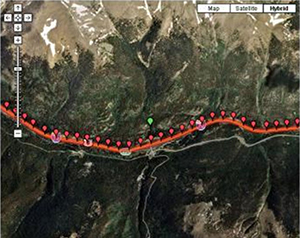
Figure 5. Website for the public to report wildlife sightings on I-70
(Courtesy of I-70 Wildlife Watch)
Colorado Department of Transportation
| Total cost: |
$361,093 |
| FHWA share: |
$152,500 |
| Period of performance: |
40 months |
| Dates: |
May 22, 2008 – September 22, 2011 |
| Status: |
Complete |
| AOTR: |
Dennis Durbin/Michael Lamprecht |
| Grant-project website: |
No longer available |
Project Goals
The goal of the Colorado Department of Transportation (CDOT) Eco-Logical grant project was to help CDOT identify mitigation projects to improve wildlife connectivity for the Interstate 70 (I-70) corridor. CDOT created a Regional Ecosystem Framework (REF)5 for the corridor that incorporates wildlife-habitat and crossing data into a Geographic Information System (GIS) database. CDOT staff brought together a stakeholder group consisting of Federal and State resource agencies, local governments, and non-governmental organizations to develop a data tool and implementation framework that could inform planning and mitigation decisions along the corridor.
Project Activities and Accomplishments
CDOT staff conducted a GIS analysis to identify 17 priority connectivity zones for wildlife and aquatic crossings along the I-70 corridor. The stakeholder group worked with CDOT to complete a Programmatic Environmental Impact Statement (PEIS) that covers projects in the corridor and incorporates data on habitat connectivity opportunities. In conjunction with the PEIS, the group developed an implementation matrix for the REF. In January 2011, project partners committed to use the matrix to implement future projects proposed along the corridor by amending a Memorandum of Understanding (MOU) associated with CDOT's Stream Wetland Ecological Enhancement Program. CDOT included the matrix in a second MOU for A Landscape Level Inventory of Valued Ecosystem Components, a CDOT-led interagency program that promotes environmental streamlining in the I-70 corridor.
Future Steps
In 2012, CDOT tested the REF matrix on a small project in the corridor, which generated positive feedback from stakeholders and resulted in minor updates to the matrix communication protocol. While CDOT would like to apply the matrix for all projects along the corridor, it has been using an abridged process for many projects because CDOT receives piecemeal funding for planning and constructing individual projects. However, due to the level of trust among stakeholders, all partners are satisfied with this informal process. CDOT hopes that continued project implementation will generate results that cause others in the State to adopt the Eco-Logical approach. CDOT will continue to collect data to evaluate performance measures in the matrix linked to stakeholder engagement and enhanced species connectivity.
Insights on Eco-Logical
CDOT has involved a large and diverse group of stakeholders in its Eco-Logical project, and it credits the Eco-Logical approach with the strong level of trust between all project partners. CDOT and its partners believe that using the matrix will lead to the best projects for all parties. Additionally, this trust has made it easier for CDOT to connect with partners earlier in the planning process for projects outside of the I-70 corridor. CDOT notes that the Eco-Logical process relies strongly on communication, and the Eco-Logical “brand” primarily focuses on environmental outcomes. Both of these factors may discourage transportation engineers and other stakeholders without resource expertise from supporting the approach, despite the benefits it may bring to these stakeholders.
Back to top
Sustainable Infrastructure Standards for Urban Ecology
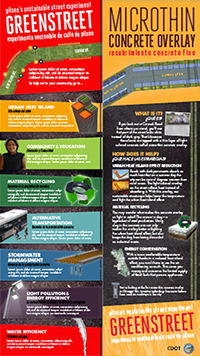
Figure 6. Outreach Materials
(Courtesy of CDOT)
Chicago Department of Transportation
| Total cost: |
$146,626 |
| FHWA share: |
$73,313 |
| Period of performance: |
40 months |
| Dates: |
August 22, 2008 – December 16, 2011 |
| Status: |
In progress |
| AOTR: |
Kevin Moody |
| Grant-project website: |
No longer available |
Project Goals
The Chicago Department of Transportation (CDOT) Eco-Logical grant project supports the outreach and education activities related to its construction of a sustainable streetscape pilot in the Pilsen neighborhood of Chicago that uses Leadership in Energy and Environmental Design (LEED) principles. These activities include the creation of a sustainable design manual and the production of educational kiosks and brochures. CDOT will use the Eco-Logical products to inform regional governments and the public about LEED principles in streetscape design and provide residents with information on how to integrate low-impact strategies into their travel and household patterns.
Project Activities and Accomplishments
CDOT created a sustainable design manual and monitored construction data on the Pilsen project on a weekly basis to assess the project's progress against the regional metrics outlined in the manual. CDOT completed the project construction and held a ribbon cutting in October 2012. A brochure describing a self-guided walking tour is now available online, and seven kiosks along Cermak Road and Blue Island Avenue educate the public about best practices such as solar-powered streetlights and stormwater catchments. The project has improved awareness of sustainable urban infrastructure in the Pilsen community and has opened up new markets for sustainable technologies by proving them in practice.
Future Steps
CDOT plans to prioritize ongoing data collection and monitoring at the pilot site, which will be used to evaluate performance measures and to assist CDOT in communicating the sustainability benefits to stakeholders and the public. CDOT also plans to apply the sustainable design manual to future work and adapt its performance measures for smaller and larger projects. CDOT is working with the local stormwater utility to overcome the challenges associated with ongoing data collection. While CDOT has a two-year maintenance contract with the project's construction contractor to steward some of the streetscape elements, CDOT staff is working with a local chamber of commerce to assume maintenance of the streetscape after the contract expires. In the future, CDOT hopes to develop a new decision support tool for balancing a project's environmental requirements. This tool would measure secondary impacts of design and construction elements and help prioritize among measures such as stormwater management, pedestrian mobility, recycled construction waste, use of local materials, and urban heat island effect.
Insights on Eco-Logical
Partnerships have been and continue to be integral to the CDOT sustainable streetscape pilot. From the outset, CDOT engaged neighborhood groups and other city departments in the planning and execution of the pilot. These relationships allowed CDOT to move quickly and efficiently through the permitting and construction phases. CDOT notes that the Eco-Logical approach is especially relevant for locally-funded projects, such as those under the jurisdiction of city or county governments. Projects that do not rely on State or Federal funds have more flexibility in design and construction standards because they are not subject to NEPA or State specifications. Many of these localities simply rely on State specifications for their project delivery processes because they lack the resources to develop their own; CDOT staff hope that their new sustainable design guidelines will provide a better alternative to these municipalities.
Back to top
Regional Transportation, Ecosystem, and Land-Use Integration Plan
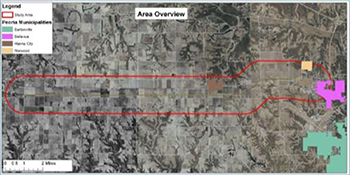
Figure 7. The Big Plan analysis of Illinois Route 336 between Peoria and Macomb (Courtesy of TCRPC)
Tri-County Regional Planning Commission (Illinois)
| Total cost: |
$218,954 |
| FHWA share: |
$109,477 |
| Period of performance: |
24 months |
| Dates: |
April 4, 2008 – April 4, 2010 |
| Status: |
Complete |
| AOTR: |
Neel Vanikar/Michael Lamprecht |
| Grant-project website: |
https://www.tricountyrpc.org/ |
Project Goals
The goal of the Tri-County Regional Planning Commission (TCRPC) Eco-Logical grant project was to complete an integrated planning document known as “The Big Plan,” which focuses on methods to improve the sustainability of the transportation system with respect to ecosystems in the Peoria, Illinois region. The Big Plan includes regional priorities and strategies for land-use and infrastructure development, policy concepts, GIS-based scenario-planning models, and technical implementation.
Project Accomplishments
In September 2010, TCRPC completed the Big Plan, which put forth a regional vision focused on five themes: agricultural preservation, balanced growth, economic development, environmental stewardship, and transportation infrastructure. TCRPC engaged in public education and outreach to encourage local governments to adopt the plan's findings and worked closely with MPO staff to integrate sustainable transportation strategies into Federally funded projects. TCRPC brought the Eco-Logical principles into its latest long-range transportation plan (LRTP), which provides policy recommendations related to land-use, environment, and public transportation. For example, green infrastructure guidelines from the Big Plan are included in the LRTP. TCRPC also received grant funding from the U.S. Department of Housing and Urban Development (HUD) Sustainable Communities Regional Planning Grant program to integrate planning activities and think more broadly about issues important to the region. The Eco-Logical project provided the framework for TCRPC's HUD grant proposal.
Future Steps
TCRPC continues to reach out to new partners to expand implementation of the Big Plan. TCRPC has been actively working to achieve the goals and promote target areas from the Big Plan, such as through studying the local foods movement and conducting market analysis to strengthen older neighborhoods. To further the Big Plan's vision for balanced growth, TCRPC is partnering with a local youth and outreach program to ensure that traditionally under-represented populations are engaged in land-use and transportation planning activities. TCRPC is also working to bring the Eco-Logical principles into the project selection process as part of its Transportation Improvement Program.
Insights on Eco-Logical
TCRPC's involvement in the Eco-Logical grant program has helped it move forward in establishing a collaborative culture. In the past, TCRPC planning tended to be separated based on jurisdiction or discipline. By thinking more regionally, TCRPC has been able to bring community leaders and transportation and land-use planners together to begin to dissolve these “silos.” TCRPC's involvement in the Eco-Logical grant program helped to strengthen and encourage its partnerships with local agencies and community groups and involve a broader range of stakeholders in the planning process. TCRPC noted that it is often helpful to have grant programs require local matches, whether in-kind or cash, as this encourages agencies to join together to achieve a common goal.
Back to top
An Eco-Logical Approach to Transportation Planning in the Kansas City Region
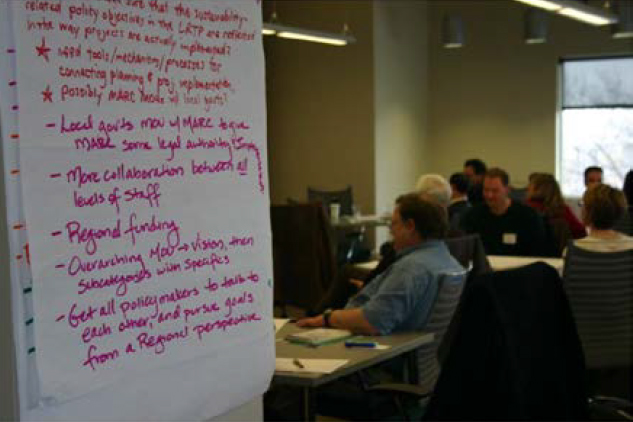
Figure 8. Stakeholders participate in meetings to devise the Action Plan.
(Courtesy of MARC)
Mid-America Regional Council
| Total cost: |
$180,000 |
| FHWA share: |
$90,000 |
| Period of performance: |
24 months |
| Dates: |
March 18, 2008 – March 18, 2010 |
| Status: |
Complete |
| AOTR: |
Michael Lamprecht |
| Grant-project website: |
No longer available |
Project Goals
The Mid-America Regional Council (MARC) Eco-Logical grant project was aimed at building a framework for an efficient and sustainable transportation system in the Greater Kansas City region. MARC developed a plan titled, “Linking Environmental and Transportation Planning: An Action Plan” (Action Plan), which included the goals of formalized collaboration with regional partners, creation of a regional mitigation strategy, and alignment of transportation decisionmaking with a regional sustainability vision. Through the Action Plan, MARC sought to frame transportation priorities in the context of natural resource conservation and community goals.
Project Accomplishments
MARC's board of directors adopted the Action Plan in May 2009. MARC staff worked with the Action Plan Advisory Group to integrate the Action Plan into its 2040 LRTP, which was adopted in June 2010. The plan includes policy direction to implement climate protection, energy, and natural resource conservation measures as a part of future transportation investments. Staff also revised project selection criteria for MARC's planning and programming processes to include environmental considerations. MARC has begun to implement recommendations on its Action Plan, including updating its Natural Resources Inventory (NRI) for future use in LRTP project planning.
Future Steps
MARC's Eco-Logical grant project set up a process to consider environmental issues more closely and established a mitigation strategy, which it is now working to implement. The agency's Action Plan will also support the next update of its LRTP, starting in 2013. As part of the LRTP update, MARC will reevaluate project selection criteria and use an evaluation structure that is derived, in part, from the Eco-Logical process. MARC has also launched its Planning Sustainable Places Program, which will fund 18 small-area studies throughout the region to analyze transportation, land-use, and environmental considerations, beginning in 2013. The small-area studies demonstrate a shift to apply the Eco-Logical approach at a local, rather than regional, scale. MARC has planned other activities related to its Action Plan, including the application of a mitigation evaluation framework and the development of ecosystem services data; however, the timeline for completion may be delayed due to limited staff availability and resources.
Insights on Eco-Logical
The Eco-Logical grant project has encouraged MARC to build stronger local processes and to consider environmental data earlier in the transportation planning process. While MARC staff are familiar with the principles of Eco-Logical, such as integrating environmental data into their work, they may not recognize Eco-Logical as a brand. Although regional councils like MARC pioneer the Eco-Logical approach in their regions, they may face barriers in working through State and Federal regulations that assume a more traditional approach to transportation planning. MARC staff noted that including the Eco-Logical approach in Federal regulations or guidance would help MARC and its stakeholders better integrate environmental resources into agency products, data, and processes.
Back to top
Opportunities for Highway Programs to Remediate Natural Resource Concerns in New York
Tioga County Soil and Water Conservation District
| Total cost: |
$132,390 |
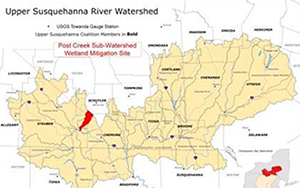
Figure 9. Upper Susquehanna River watershed
(Courtesy of Upper Susquehanna Coalition)
|
| FHWA share: |
$112,490 |
| Period of performance: |
48 months |
| Dates: |
March 4, 2008 – Present |
| Status: |
In progress |
| AOTR: |
Michael Lamprecht |
| Grant-project website: |
No longer available |
Project Goals
The goal of the Tioga County Soil and Water Conservation District (TCSWCD) Eco-Logical project was to work with the New York FHWA Division Office and New York State DOT (NYSDOT) staff to develop an REF (see footnote on page 28), consisting of natural resource maps covering the county's watersheds. TCSWCD planned to use the REF to assist planners in making better conservation and mitigation decisions in the Susquehanna Basin and the Finger Lakes-Lake Ontario Basin. The project team also assisted in the development of an in-lieu fee (ILF) program in the Upper Susquehanna River Basin, which would help implement the REF.
Project Activities and Accomplishments
Working closely with NYSDOT staff, the TCSWCD project team collected natural resource and transportation data to populate an online mapping tool for the REF, which was created specifically for use by NYSDOT. In 2012, the TCSWCD completed the first version of the tool and drafted a report on the project, which details conservation opportunities for a range of “keystone species” within the Susquehanna Basin. The report enables environmental planners at NYSDOT to consider habitats that may otherwise fall outside the scope of the transportation planning process.
The nonprofit Upper Susquehanna Coalition (USC) used data from the REF to develop the region's first ILF program for the Susquehanna River watershed, which entailed identifying sites that NYSDOT and other agencies can utilize for mitigation. USC is a network of soil and water conservation districts in New York and Pennsylvania whose mission is to protect and improve water quality and natural resources in the Upper Susquehanna Basin. The USC acted on behalf of TCSWCD through the ILF program to review and identify mitigation priorities and sought input from a multi-agency alliance. The relationships gained in developing the ILF will strengthen implementation of the REF.
Future Steps
NYSDOT staff in Region 6 will test the online mapping tool and offer feedback to improve its use with the DOT. TCSWCD then plans to update the tool based on the feedback and train NYSDOT environmental planners to use it in identifying mitigation sites; other NYSDOT staff are also welcome to attend the trainings. The data for the REF is regional but the template for the tool is statewide, which would allow other NYSDOT districts or organizations outside of the Upper Susquehanna region to adapt the tool with their own data.
Insights on Eco-Logical
While TCSWCD practices the Eco-Logical approach as part of its daily business, it recognized challenges in working with the specific contracting and financial protocols of transportation agencies. These protocols can make it difficult for transportation agencies to manage and fund one collective mitigation site for multiple transportation projects. The ILF program circumvents that problem by allowing an agency to purchase credits for a transportation project and then select a high-priority mitigation site, as identified in the REF, to mitigate impacts from several transportation projects.
Back to top
Creating Tools to Support Integrated Transportation and Resource Planning in New Hampshire
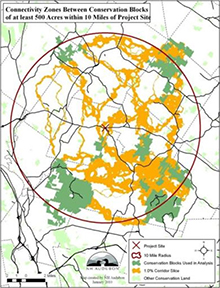
Figure 10. GIS-based wildlife-connectivity model with conservation lands and connectivity zones
(Courtesy of NHA)
New Hampshire Audubon
| Total cost: |
$48,939 |
| FHWA share: |
$24,464 |
| Period of performance: |
20 months |
| Dates: |
September 1, 2008 – April 30, 2010 |
| Status: |
Complete |
| AOTR: |
Dennis Durbin/Michael Lamprecht |
| Grant-project website: |
https://www.nhaudubon.org |
Project Goals
New Hampshire Audubon (NHA) developed a connectivity framework to integrate transportation and land-use planning for its Eco-Logical grant project. NHA intended for MPOs and Regional Planning Associations (RPAs) to use the model and framework for environmental screening of transportation projects before they submit their connectivity framework to New Hampshire DOT (NHDOT).
Project Activities and Accomplishments
NHA and the New Hampshire Fish and Game Department developed a GIS-based wildlife-connectivity framework to evaluate the impact of transportation projects on wildlife species. To create the model, NHA convened a working group with representatives from State and Federal agencies and conservation organizations. The working group developed an impact assessment framework that rated the resistance for 16 wildlife species by measuring how natural and unnatural barriers impacted the species' abilities to move across the landscape. The analysis incorporated information on species proximity to traffic, riparian areas, land cover, and slope. As part of its outreach, NHA partnered with the Rockingham Planning Commission to apply the impact assessment framework to transportation projects. The dataset for the connectivity model is available on the NH Statewide GIS website for anyone with access to GIS software.
Future Steps
The New Hampshire Fish and Game Department will update the data for the connectivity model on an ongoing basis. NHA will continue to use the model in its work with local communities to improve wildlife protection through municipal planning ordinances and regulations. The Nature Conservancy will use the model for Staying Connected, a regional conservation project funded by the U.S. Fish and Wildlife Service, in partnership with State wildlife and transportation agencies and 11 other organizations.
Insights on Eco-Logical
While NHA has a long-standing relationship with State conservation agencies, the Eco-Logical grant program provided a new opportunity to initiate discussions with State and regional transportation planning staff. NHA has not yet been able to help NHDOT integrate wildlife data into transportation planning, perhaps due to limited capacity of NHDOT staff. Also, members of project working group had differing priorities for mapping and applying the species data, and participants did not fully reconcile their differences. This led to challenges when NHA tried to enlist transportation partners to apply the framework to transportation planning.
Back to top
Linking Lands and Communities in the Land-of-Sky Region
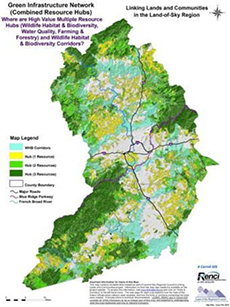
Figure 11. Green infrastructure map with biodiversity corridors and hubs
(Courtesy of LOSRC)
Land-of-Sky Regional Council (Western North Carolina)
| Total cost: |
$208,000 |
| FHWA share: |
$104,000 |
| Period of performance: |
24 months |
| Dates: |
March 17, 2008 – March 17, 2010 |
| Status: |
Complete |
| AOTR: |
Michael Lamprecht |
| Grant-project website: |
http://www.landofsky.org/ecdpast.html |
Project Goals
The goal of the Land-of-Sky Regional Council (LOSRC) Eco-Logical grant project was to develop a green infrastructure framework to identify priority ecological resources and areas suited for future development in a four-county region of Western North Carolina. Based on stakeholder involvement and data analysis, LOSRC expanded the initial project to encompass a larger boundary and created several publicly available resource maps. The project materials include data and maps on water quality, agricultural suitability, wildlife habitat, and biodiversity.
Project Activities and Accomplishments
LOSRC developed resource assessments and a Regional Green Infrastructure Network map, using State and local GIS data and national spatial data integration tools. The French Broad River MPO, housed within LOSRC, incorporated information and maps from the Green Infrastructure Network into the “Environmental Analysis” chapter of its LRTP. The MPO used the information to map priority transportation projects over the Green Infrastructure Network to identify potential areas of conflict and shared the results with NCDOT.
LOSRC engaged State and local resource agencies, local developers, and landscape architects to assist in data collection and in applying the framework to local and regional plans and projects. LOSRC enlisted the expertise of regional biologists and ecologists to ensure that wildlife habitat and corridor maps best reflected regional values and scientific data. In addition, LOSRC partnered with the Renaissance Computing Institute at the University of North Carolina-Asheville and a GIS consultant to conduct the analysis and produce maps.
Future Steps
LOSRC has incorporated data from its Eco-Logical project into GroWNC, a current three-year regional planning initiative supported by U.S. Department of Housing and Urban Development grant funds. GroWNC is using the Eco-Logical grant project tools and maps to prepare scenarios that present possible futures related to economic growth and land development patterns for five local counties. LOSRC anticipates that the selected scenario will include strong natural resources components, supported by data from the Eco-Logical project. Through GroWNC, LOSRC staff are reaching out to local governments to help them better use maps and tools from the Eco-Logical project. LOSRC also received additional grant funding from the Blue Ridge National Heritage Area to share the project approach and results with four adjacent councils of governments. Data from the Eco-Logical project will also be utilized in future regional economic development, conservation, agricultural, and water resources projects.
Insights on Eco-Logical
Through its Eco-Logical grant project, LOSRC has recognized the importance of communicating the benefits (especially economic benefits) of data and tools to stakeholders, as they are more likely to use these resources if they understand the resulting benefits. This communication, however, is a significant time investment for LOSRC. LOSRC noted that encouraging commitment from local governments at the beginning of the planning process can help to streamline later implementation efforts. In addition, this commitment can help to strengthen Eco-Logical's integration into daily business practices among environmental and transportation agencies.
Back to top
Integration of North Carolina's Conservation and Transportation Planning
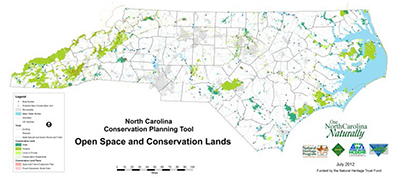
Figure 12. Sample open-space and conservation-assessment map from the project's Conservation Planning Tool
(Courtesy of NCDENR)
North Carolina Department of Environment and Natural Resources
| Total cost: |
$274,257 |
| FHWA share: |
$136,689 |
| Period of performance: |
25 months |
| Dates: |
April 3, 2008 – April 30, 2010 |
| Status: |
Complete |
| AOTR: |
Dennis Durbin/Michael Lamprecht |
| Grant-project website: |
No longer available |
Project Goals
The goal of the North Carolina Department of Environment and Natural Resources (NCDENR) Eco-Logical grant project was to produce data for a strategic conservation planning tool for North Carolina that included development of wildlife-habitat and vegetation data. NCDENR intended to apply this project to improving the integration of conservation data into statewide transportation planning in coordination with the North Carolina Department of Transportation (NCDOT). In addition, Metropolitan and Rural Planning Organizations (MPO/RPOs) and councils of governments in North Carolina could use the data to inform their local and regional long-range planning.
Project Accomplishments
NCDENR's Eco-Logical grant project provided data on upland and non-riparian wetland habitats that enhance the State Wildlife Action Plan. The project also digitized cultural resource features to demonstrate their role within the State's ecosystems. NCDENR integrated the data into a comprehensive statewide conservation-planning tool, the NC Conservation Planning Tool (CPT), available online to the public. The data also became a main feature of the North Carolina Wildlife Resources Commission's Green Growth Toolbox, which offers technical assistance, training workshops, and GIS data to local governments to support activities that encourage “green” development. NCDENR has worked with NCDOT to host joint workshops that focus on the use of NCDENR's Eco-Logical grant project data to support transportation planning, permitting, and project delivery. NCDENR staff have also presented the CPT to MPO/RPO staff, who responded positively to the availability of such data in a centralized location. NCDENR reported consistent support for the tools throughout recent leadership changes at the department level.
Future Steps
NCDENR continues to work with NCDOT to integrate the CPT, Green Growth Toolbox, and its Eco-Logical data, into statewide, local, and regional long-range transportation planning. NCDENR is helping NCDOT review its comprehensive transportation planning process to consider environmental data earlier and more frequently; this process will provide guidance and recommended best practices for MPOs and RPOs statewide as they continue to rely more on environmental data to evaluate projects. NCDENR also regularly works with its partners to update and obtain new CPT data every six months. The North Carolina Natural Heritage Trust Fund covers a full-time NCDENR staff to work on data updates and project outreach.
Insights on Eco-Logical
Through comprehensive outreach efforts, including workshops and presentations, NCDENR has demonstrated how agencies can cooperate, collaborate, and change their practices to better integrate environmental data into the transportation planning process. Through data-sharing and transparency, NCDENR has helped stakeholders better understand the implications of using environmental data in transportation planning. Frequent interaction with partner agencies to update the CPT data has helped to maintain NCDENR's Eco-Logical grant project as an effective resource for the entire State.
Back to top
Using the Eco-Logical Approach to Develop and Implement Conservation and Mitigation Priorities for Oregon
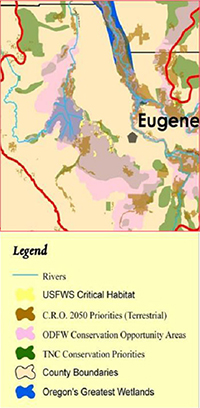
Figure 13. Integrated conservation priorities in the Willamette Basin
(Courtesy of OSU)
Oregon State University
| Total cost: |
$101,552 |
| FHWA share: |
$49,962 |
| Period of performance: |
20 months |
| Dates: |
June 11, 2008 – February 11, 2010 |
| Status: |
Complete |
| AOTR: |
Michael Lamprecht |
| Grant-project website: |
No longer available |
Project Goals
Two project goals of the Oregon State University (OSU) Eco-Logical grant were to identify Oregon's conservation priority areas and to consolidate disparate data from each area into an online Regional Ecosystem Framework (REF) tool (see footnote on page 28). The project built on the Oregon Conservation Strategy, developed by the Oregon Department of Fish and Wildlife, and the Comprehensive Mitigation/Conservation Strategy, prepared by the Oregon Department of Transportation (ODOT).
Project Accomplishments
The REF helps agencies throughout the State plan for mitigation and conservation projects associated with transportation projects; the online tool characterizes projects relative to conservation priority areas. OSU completed a pilot study to apply the online tool to the Willamette Valley, where the region's two MPOs began to use the REF to inform their planning activities. The U.S. Environmental Protection Agency (EPA); Oregon Department of State Lands (DSL), the State wetlands agency; and Oregon Department of Environmental Quality informally agreed to adopt OSU's methods to identify and implement important wetland mitigation sites. Additionally, OSU helped DSL to develop a wetlands database based on REF data; DSL has since used this database to guide its mitigation planning and implementation efforts. OSU also assisted the U.S. Fish and Wildlife Service (FWS) in determining areas to avoid for bridge projects to complement ODOT's Bridge Delivery Program and then applied the project methodology to develop endangered species maps for FWS. As part of the effort, OSU provided environmental data to ODOT staff. Data from OSU's Eco-Logical grant project has also helped to develop The Intertwine, a conservation strategy that identifies priority areas for preservation in the Portland-Vancouver metro area. At the MPO level, OSU has worked with three MPOs (Metro, Lane Council of Governments, and Rogue Valley Council of Governments [RVCOG]) to apply the Eco-Logical tool to their planning activities. RVCOG, one of OSU's pilots for its REF, participated in a pilot project through the Capacity program of the Second Strategic Highway Research Program (C21) that focuses on innovative ways to integrate environmental data into the transportation planning process in southwestern Oregon.
Future Steps
OSU is working with ODOT, The Wetlands Conservancy, and DSL to catalogue potential and existing mitigation sites in Oregon. OSU has also received additional funding from EPA and The Wetlands Conservancy to complete a State wetlands database and is coordinating with FWS, DSL and, EPA staff to use spatial data to identify and attribute wetland quality.
Insights on Eco-Logical
OSU noted that much of the success in promoting the Eco-Logical approach comes from leadership support, which includes support from the Governor and leaders at ODOT. Stakeholder buy-in helped OSU to update and expand on the data and applications of its REF. OSU observed that many agencies in Oregon produce plans independently, often hiring consultants and focusing on a specific plan application. These agencies have expressed reluctance to share data or to forego their independent plans in favor of a plan with broader goals. OSU is working to communicate that joint planning can save time and money, while still meeting the agencies' goals. OSU's Eco-Logical grant project also demonstrated to ODOT and other State agencies that the Eco-Logical approach is similar to a programmatic agreement in that it streamlines communications and project reviews between environmental and transportation agencies.
Back to top
Central Texas Greenprint for Growth: A Tool for Balancing Sustainable Conservation Goals with the Infrastructure Needs of Our Rapidly Urbanizing Region
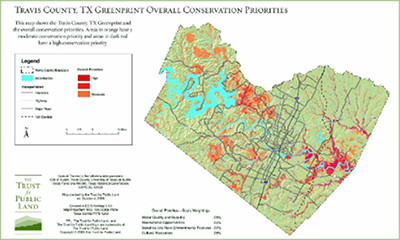
Figure 14. Travis County Conservation Priority Plan
(Courtesy of CAPCOG)
Capital Area Council of Governments
| Total cost: |
$227,764 |
| FHWA share: |
$113,882 |
| Period of performance: |
24 months |
| Dates: |
May 16, 2008 – May 16, 2010 |
| Status: |
Complete |
| AOTR: |
Michael Lamprecht |
| Grant-project website: |
www.capcog.org |
Project Goals
The goal of the Capital Area Council of Governments (CAPCOG) Eco-Logical grant project was to create a Greenprint for the Central Texas region to help planners and transportation agencies plan for future growth. With input from regional and local stakeholder groups, CAPCOG's Greenprint for Growth plan prioritized the protection of water quality, ecological resources, farm and ranch lands, recreational and cultural resources, and scenic corridors. The Greenprint expanded on a previous CAPCOG project, the Travis County Greenprint, to include three other counties in the Austin-Round Rock metropolitan statistical area. (Williamson County did not participate.)
Project Accomplishments
CAPCOG completed the final report, maps, and opportunity areas for the three additional counties in 2010. The Greenprint for Growth integrated data into a GIS model that prioritized conservation opportunities and displayed them in a series of maps, available in print and on the Greenprint website. During development of the maps, CAPCOG held a series of meetings with elected officials, technical experts, and county representatives to determine the county and regional priorities that informed the maps and the individual county-based Greenprint reports. The priorities from the Greenprint for Growth were included in the Bastrop County Comprehensive Transportation Plan and informed the selection of conservation easements and mitigation lands in Travis and Hays Counties. CAPCOG's work encouraged the counties to consider environmental effects earlier in the transportation planning process. The project compiled data and identified environmentally sensitive areas within land parcels to evaluate impacts on a closer scale.
Future Steps
CAPCOG continues to promote use of the Greenprint among local governments, although some counties and cities have withdrawn support due to changing regional politics. CAPCOG is supporting the 2014 update of the Capital Area Metropolitan Planning Organization's 2040 long-range transportation plan and is working to incorporate Greenprint data into this update. CAPCOG's Greenprint data and investments have also helped to inform and support the ongoing Pecan Street Project Inc. effort, which explores the use of renewable energy in the Austin area and earned the 2012 Innovation Award from the National Association of Development Organizations.
Insights on Eco-Logical
By using the Eco-Logical approach, CAPCOG was able to work with many entities, including non-profits, county governments, and municipalities, and establish stronger partnerships than had existed prior to the development of the Greenprint. However, over time, CAPCOG has faced challenges in continuing the implementation of its Eco-Logical grant project, in large part due to the lack of an implementing agency from project inception. It has been difficult for CAPCOG to encourage buy-in from local decisionmakers and stakeholders. As a result of its involvement in the Eco-Logical grant program, CAPCOG recognizes the importance of involving stakeholders, including environmental and transportation agencies, at the start of a project and developing tailored communication methods for specific audiences.
Back to top
Developing a Regional Decision-Support System for the Houston-Galveston Region
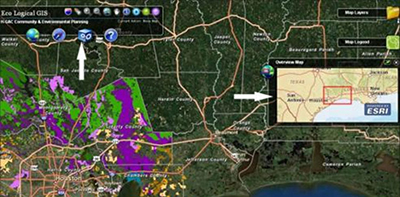
Figure 15. H-GAC online decisionmaking mapping tool
(Courtesy of H-GAC)
Houston-Galveston Area Council
| Total cost: |
$200,000 |
| FHWA share: |
$100,000 |
| Period of performance: |
27 months |
| Dates: |
March 14, 2008 – June 14, 2010 |
| Status: |
Complete |
| AOTR: |
Diane Turchetta |
| Grant-project website: |
https://www.h-gac.com/eco-logical |
Project Goals
The goal of the Houston-Galveston Area Council (H-GAC) Eco-Logical project was to create a GIS tool, known as the Eco-Logical tool, to identify environmental resource priority areas. The tool serves a regional need to balance growth with natural resource conservation, and allows for transportation planners to consider environmental impacts in the project prioritization process. In creating the tool, the project team aimed to develop a methodology that could be replicated in other regions.
Project Activities and Accomplishments
H-GAC completed all resource mapping and published a web-based, interactive Eco-Logical tool in June 2010. The tool comprises over 12,000 mapped features covering six ecotypes. Since completing the project, H-GAC developed several mechanisms to promote local government and non-governmental organization use of the tool within the region, including a brochure for local governments, an interactive website, and an application for smartphones. In 2011, H-GAC received a grant from the National Association of Regional Councils to conduct additional outreach, including two webinars targeted at regional and national environmental and transportation organizations.
Future Steps
The Conservation Fund (TCF) is using funding from local and regional foundations to apply a methodology similar to H-GAC's to expand the tool's functions in five counties outside of H-GAC's metropolitan planning organization (MPO) boundaries, with assistance from the H-GAC project team and members of their Eco-Logical project advisory committee. H-GAC plans to integrate TCF's work into the online tool, including documenting a methodology that TCF is developing to show the monetary benefits of ecological services. H-GAC staff is drafting background information on the Eco-Logical tool and recommendations for inclusion for the 2040 Regional Transportation Plan (RTP). Staff hopes that the MPO Transportation Policy Council will include the tool as a required component in the RTP. H-GAC staff would like to update the tool to reflect recent land-use changes and other feedback from the project's advisory committee to make the tool more appealing to a diverse group of users. H-GAC's final report documents the methodology for developing the Eco-Logical tool, which other local or regional government agencies could replicate.
Insights on Eco-Logical
In working with TCF to expand the methodology to five additional counties, H-GAC staff realized the need to adjust ranking systems for prioritizing resources to better capture inherent differences in urban and rural counties. When TCF tried to build on the Eco-Logical tool with its own methodology, it used incompatible metrics for comparing resource data. H-GAC noted challenges with maintaining updated data and maintaining awareness of the tool as staff changes occur. Although H-GAC recognizes benefits of the Eco-Logical approach for a variety of stakeholders, they believe that greater support for the approach from State and Federal transportation agencies would help other regional organizations better integrate Eco-Logical into daily business practices.
Back to top
North Central Texas Regional Ecosystem Framework
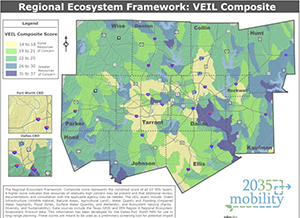
Figure 16. Vital Ecosystem Information Layer (VEIL) composite scores for the Dallas-Fort Worth Region
(Courtesy of NCTCOG)
North Central Texas Council of Governments
Project Goals
The goals of the North Central Texas Council of Governments (NCTCOG) Eco-Logical project were to develop an REF (see footnote on page 28) to help agencies assess environmental impacts of proposed infrastructure projects and to enhance multi-agency understanding of critical resource-protection areas. To develop the REF, NCTCOG analyzed and aggregated GIS data developed by EPA Region 6 (see project summary on page 42) to the subwatershed level for the entire Metropolitan Planning Area.
Project Activities and Accomplishments
NCTCOG utilized a watershed-scale approach to integrate regional conservation data and infrastructure planning into an REF dataset. Specifically, NCTCOG used the regional data to develop ten base maps and one composite map of resource priorities by watershed. The project team developed an REF user guide to introduce the public to the watershed concept and a technical overview document to help other COGs replicate the process. The guide focuses primarily on watershed information with some guidance on applications for transportation infrastructure. The team collected feedback from regional resource agencies, including the U.S. Environmental Protection Agency, the U.S. Fish and Wildlife Service, and Texas Parks and Wildlife, to refine the priority weightings assigned to different criteria in the REF methodology. NCTCOG also solicited feedback from the resource agencies in vetting the environmental policies included in the Metropolitan Transportation Plan (MTP). The MTP adopted in 2011 was the first to include a chapter devoted to environmental considerations, which was possible due to the analysis and data contained in the REF.
Future Steps
NCTCOG plans to use the REF as a decisionmaking tool in the next iteration of the MTP to inform project selection, evaluate sustainability measures, and improve regional mitigation initiatives. NCTCOG also plans to develop a regional mitigation framework, or “Shared Value Mitigation Program,” which will enhance the implementation of the REF. Through this program transportation agencies will fund priority resource mitigation initiatives defined by resource agencies in their multi-year strategic plans. Projects selected for funding will be voluntarily negotiated between the transportation agency and resource agency and publicly vetted during the National Environmental Policy Act or permitting process to mitigate adverse impacts associated with a transportation project. This program may potentially fund both capital and maintenance costs associated with long-term, systematic resource mitigation and conservation. NCTCOG also plans to develop a questionnaire to document information from the REF and other transportation planning efforts to more effectively carry the information forward from planning through project development.
Insights on Eco-Logical
In the process of developing the REF, NCTCOG realized that its staff would need to periodically re-educate internal and external partners on the purpose and use of the REF, due to staff turnover at various agencies. NCTCOG specifically identified a need to educate local governments and transportation partners, which are interested in integrated planning, but largely unaware of the REF. To address this issue, NCTCOG plans to consolidate information from the REF into a more user-friendly format and enhance outreach efforts as part of the development of the next MTP.
Back to top
Blueprint Jordan River: A Lake-to-Lake Vision
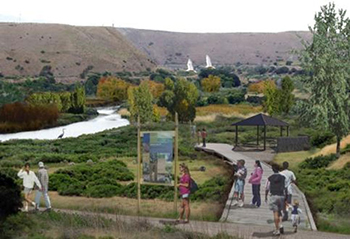
Figure 17: Vision of a nature preserve and public trail from the Blueprint Jordan River plan
(Courtesy of Envision Utah)
Envision Utah
| Total cost: |
$208,000 |
| FHWA share: |
$85,000 |
| Period of performance: |
12 months |
| Dates: |
June 9, 2008 – June 9, 2009 |
| Status: |
Complete |
| AOTR: |
Frederick Bowers |
| Grant-project website: |
jordanrivercommission.com/vision/ |
Project Goals
The goal of the Blueprint Jordan River grant project was to develop a collective vision for the Jordan River corridor that integrated transportation planning and natural resource restoration. The project team collaborated with the community, local government, and State and Federal agencies to carry out the grant project. As a result of the collaboration, the project team, coordinated by the public-private partnership Envision Utah, produced the Blueprint Jordan River vision document to guide development and restoration along the Jordan River.
Project Accomplishments
Envision Utah worked with planners, local government representatives, community members, and non-government organizations in Salt Lake and Utah counties to lead the Blueprint Jordan River visioning process. Once the Blueprint document was complete, Envision Utah helped Salt Lake County establish an interim planning committee, which led to the formation of the Jordan River Commission in August 2010. Through an interlocal agreement, 17 cities, counties, transportation agencies, and other local and State agencies serve as Commission members. A Technical Advisory Committee (TAC) helps guide the Commission's decisionmaking on funding projects to implement the Blueprint vision. The TAC provides a technical review and recommendations for all significant proposed projects within a one-half mile of the river. Using priorities identified in the Blueprint, the Utah Transit Authority has selected and constructed a 90-acre nature preserve along the Jordan River as mitigation for a new rail line. Through the Commission, Blueprint Jordan River has remained a living document with consistent public awareness throughout the region.
Future Steps
The Jordan River Commission will continue to serve as the implementing agency of the Blueprint vision into the future. Grant funding covers the Commission's expenses and Executive Director salary. The Commission supports projects across the region that uphold the Blueprint vision. For example, voters recently passed a county ballot initiative that will dedicate $15 million to completing the Jordan River Trail and its connections; funds will help complete trail construction on the Parkway Trail, the design of which is currently underway. Envision Utah continues to serve in an advisory role as a member of the TAC to offer feedback on proposed projects and activities. Envision Utah has also integrated Eco-Logical principles into other projects, such as Wasatch Canyons Tomorrow, which discuss transportation challenges and environmental impacts unique to the canyons of the Wasatch Mountains.
Insights about Eco-Logical
Envision Utah and its partners approached the Blueprint from a broader perspective, using the Eco-Logical approach, which resulted in a product that addressed issues across disciplines and received more support across the region. Participation in the Eco-Logical approach brought together diverse stakeholders from across the region to discuss ideas that might normally fall out of their purview. Envision Utah highlighted elected officials as important members of the Commission; through their work in the Commission, they bring awareness of Eco-Logical principles to their municipalities. Much of the project's continued success stems from the activity and full-time staff of the Jordan River Commission. While future funding to support the Commission Executive Director is uncertain, Envision Utah is optimistic about the project's future due to the recent ballot initiative and participation from numerous municipalities and State and local agencies.
Back to top
Integrating Green Infrastructure and Transportation Planning
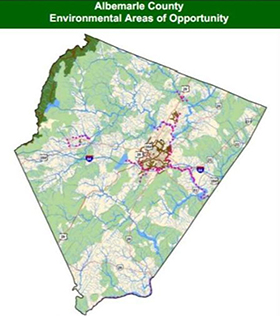
Figure 18. A page from the 2009 TJPDC Green Infrastructure Study (Courtesy of TJPDC)
Thomas Jefferson Planning District Commission (Virginia)
| Total cost: |
$155,731 |
| FHWA share: |
$77,833 |
| Period of performance: |
36 months |
| Dates: |
May 20, 2008 – May 20, 2011 |
| Status: |
Complete |
| AOTR: |
Michael Lamprecht |
| Grant-project website: |
tjpdc.org |
Project Goals
The goal of the Thomas Jefferson Planning District Commission (TJPDC) Eco-Logical project was to develop a green infrastructure plan that integrates transportation, development, and natural resource plans in the five-county planning district. The project team developed two GIS-based methodologies to help transportation planners prioritize mitigation projects for streams and wetlands.
Project Accomplishments
TJPDC staff created tools to help the metropolitan planning organization (MPO) and local governments to prioritize projects based on potential environmental impacts during the long range transportation planning (LRTP) process. Using methodologies they developed for stream and wetland prioritization, the TJPDC staff finalized a set of GIS maps that rank mitigation sites around the region at a detailed scale appropriate for project-level planning. One of the maps includes an overlay of proposed transportation projects so that agencies can prioritize projects based on potential impacts. TJPDC also created a “Least Environmental Cost Analysis” framework to use in developing alternatives in construction projects. TJPDC has provided its resulting Regional Ecosystem Framework (REF) to numerous local and State transportation and environmental agencies.
Future Steps
TJPDC continues to integrate the methodologies and maps of its Eco-Logical product into the region's LRTP, which is expected to be adopted in 2014. As part of this effort, TJPDC is developing cost-benefit measures to compare projects. These measures, combined with the REF score, will help the MPO compare different growth scenarios. TJPDC has also shared the data from its Eco-Logical project with the Rivanna River Basin Commission, a local watershed organization that is incorporating the data into its Rivanna Snapshot, a publically-accessible outreach document, and a separate watershed management plan that offers technical information about development impacts and watershed health for planners and other practitioners. TJPDC continues to promote its Eco-Logical project among stakeholders such as the Virginia Departments of Environmental Quality, Forestry, and Transportation. As many State agencies still perform their own mitigation analyses, TJPDC hopes to work with these agencies to apply the REF and use an ecosystem-scale approach to selecting mitigation sites.
Insights on Eco-Logical
TJPDC believes that the Eco-Logical approach offers a comprehensive method for considering impacts on natural and cultural resources and analyzing the overall impacts of future development. TJPDC noted that its successes with the REF may be tested when projects reach environmental permitting under the National Environmental Protection Act. TJPDC is concerned agencies may not maintain commitments made during early planning stages, in part because using the Eco-Logical approach is new for their region or agencies. Small agencies like TJPDC also may not have access to the expertise and funding needed to collect and analyze environmental data. While the Eco-Logical approach provides benefits to the public and decisionmakers, TJPDC noted that more work may be needed to demonstrate these benefits and encourage buy-in from stakeholders.
Back to top
A Regional Ecological Assessment Protocol for the South Central United States
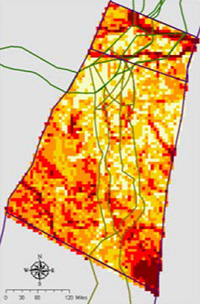
Figure 19. Integration of REAP tool into GISST
(Courtesy of EPA)
U.S. Environmental Protection Agency, Region 6
Project Goals
The U.S. Environmental Protection Agency (EPA) Region 6 developed a Regional Ecological Assessment Protocol (REAP) that uses a GIS analysis to classify land on the basis of its ecological significance. This project expands on the Texas Ecological Assessment Protocol, which collected and analyzed data for the State of Texas. The REAP now includes all five States in Region 6 (Arkansas, Louisiana, New Mexico, Oklahoma, and Texas) and portrays significant ecological relationships across State boundaries.
Project Activities and Accomplishments
EPA Region 6 staff collected data by ecoregion, which is an area of land and water defined by climate, geology, and species, rather than political boundaries. EPA Region 6 staff used subsets of national datasets in the REAP and worked with State wildlife agencies to acquire coarse rare species data to aggregate in the REAP model. Datasets included in the REAP are available on an environmental data gateway that expands access to any users with GIS capabilities. In 2012, EPA Region 6 staff integrated the REAP into NEPAssist, an online tool that consolidates information for the National Environmental Policy Act (NEPA) review process. Staff also brought REAP data into the GIS Service Tool (GISST), a screening tool that assesses environmental vulnerabilities by evaluating characteristics captured in REAP along with factors such as habitats and toxicity. Integration of REAP data with these tools makes the information accessible for practitioners, including those without access to or technical expertise in GIS.
EPA staff has conducted training with Departments of Transportation (DOTs) Texas, Arkansas, and New Mexico. All metropolitan planning organizations (MPOs) in those States have access to the REAP, and EPA staff reports that planners use the REAP to identify potential impacts of and mitigation for transportation projects in early planning. The North Central Texas Council of Governments (see page 39) applied the REAP data to develop their Regional Ecosystem Framework, which they used to develop a new chapter devoted to environmental considerations in their Metropolitan Transportation Plan.
Future Steps
EPA would like to expand the REAP data to cover a national scale. As the REAP is already integrated into NEPAssist, which is used across all EPA regions, expanding the data to cover the other regions would make the tool accessible to NEPA practitioners nationwide. Other near-term goals include acquiring and incorporating accurate data on Tribal lands, creating tablet computer applications for NEPAssist, and adapting the REAP for automated updates. EPA staff plans to continue promoting the REAP and other GIS tools among MPOs and State regulatory agencies for application to transportation projects. However, EPA Region 6 has limited staff time to devote to integrating data into transportation due to staff turnover.
Insights on Eco-Logical
EPA Region 6 found that successfully developing a tool like the REAP requires diverse skill in areas such as GIS programming, communications, marketing, graphic design, and crafting interagency agreements. A consistent champion (or champions) is also crucial, although maintaining such a champion in the midst of staff turnover is challenging. Education and outreach are important to help practitioners navigate vast quantities of data and to help them embrace the cultural shift necessary to implement the Eco-Logical approach.
Back to top
| 1 |
The IEF closely follows the eight steps of the Eco-Logical approach and puts forth a process to guide transportation and resource practitioners in the integration of transportation and ecological decisionmaking. A SHRP2 capacity research project developed the IEF. |
| 2 |
FHWA, in collaboration with the Signatory Agencies, developed two new volumes of Eco-Logical Successes featuring in-depth updates on the Bureau of Land Management and U.S. Fish and Wildlife Service in January 2012 and on USFS and NPS in September 2012. |
| 3 |
The REF is an element of integrated planning that consists of an overlay of maps of agencies' individual plans, accompanied by descriptions of conservation goals in the defined region. |
| 4 |
For additional details on the individual strategies that grant recipients use to update data, see Appendix C: Eco-Logical Grant Project Summaries. |
| 5 |
The REF is an element of integrated planning that consists of an overlay of maps of agencies' individual plans, accompanied by descriptions of conservation goals in the defined region. The REF can provide agencies with a joint understanding of the locations and impacts of proposed infrastructure. |
Back to top

